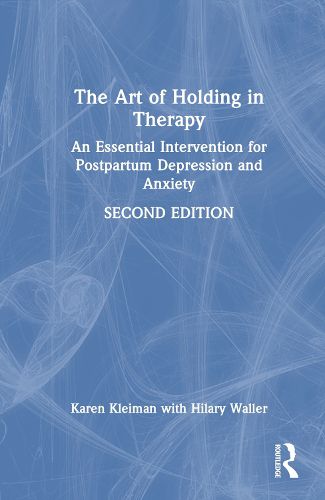Readings Newsletter
Become a Readings Member to make your shopping experience even easier.
Sign in or sign up for free!
You’re not far away from qualifying for FREE standard shipping within Australia
You’ve qualified for FREE standard shipping within Australia
The cart is loading…






Written by a pioneer in the field, this second edition provides updated skill-building tools and a more developed, comprehensive understanding of how therapists can use the holding approach when treating perinatal distress.
First conceptualized by D.W. Winnicott, the "holding" approach refers to a therapist's capacity to respond to postpartum distress in a way that facilitates an immediate and successful therapeutic alliance. This model has continued to advance, and this newly updated edition will help readers learn how to contain high levels of agitation, fear, and panic in a way that cultivates trust and the early stages of connectedness. Filled with vignettes throughout, this book includes chapters on what holding is, how to prepare using this model, the emotions specific to postpartum mothers, the essential holding elements, and the practice of holding. This book uniquely addresses the needs of therapists who may find themselves confronting, struggling with, or recovering from their own reproductively related journeys, with chapters discussing the professional's identity, clinical challenges, and a new chapter on cultural humility.
This book is essential reading for all of those in the perinatal mental health community, such as therapists, social workers, and clinicians.
$9.00 standard shipping within Australia
FREE standard shipping within Australia for orders over $100.00
Express & International shipping calculated at checkout
Written by a pioneer in the field, this second edition provides updated skill-building tools and a more developed, comprehensive understanding of how therapists can use the holding approach when treating perinatal distress.
First conceptualized by D.W. Winnicott, the "holding" approach refers to a therapist's capacity to respond to postpartum distress in a way that facilitates an immediate and successful therapeutic alliance. This model has continued to advance, and this newly updated edition will help readers learn how to contain high levels of agitation, fear, and panic in a way that cultivates trust and the early stages of connectedness. Filled with vignettes throughout, this book includes chapters on what holding is, how to prepare using this model, the emotions specific to postpartum mothers, the essential holding elements, and the practice of holding. This book uniquely addresses the needs of therapists who may find themselves confronting, struggling with, or recovering from their own reproductively related journeys, with chapters discussing the professional's identity, clinical challenges, and a new chapter on cultural humility.
This book is essential reading for all of those in the perinatal mental health community, such as therapists, social workers, and clinicians.